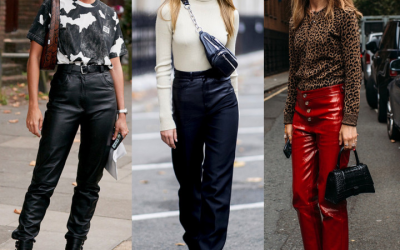In the simplest terms, zero-waste fashion is the practice of creating clothing and accessories with no post-consumer waste. This means that all materials used in the manufacturing process are recyclable or compostable.
It can be a challenge to create clothing without any waste, but there are a growing number of brands that are committed to this sustainable practice.
Here’s our take on zero waste fashion design and why it’s part of stitching together a more sustainable fashion industry.
Pre- and Post-Consumer Zero-Waste Fashion
The elimination of textile waste can be implemented at various stages of the manufacture and design process of a garment. It can even begin before garment construction during the design process.
Broadly speaking, zero waste falls under two categories: before and after the clothes reach consumers. Here’s a brief explanation of their differences.
Pre-Consumer Zero Waste Fashion Design
This is the process of designing without waste before any materials are produced. The zero-waste designer creates garments by using every scrap of fabric and eliminating the need for cutting or sewing patterns. This can be done by draping fabric directly onto the body or mannequin, which eliminates the need for drafting patterns and allows for more creativity.
Some experts estimate that up to 25% of fabric waste is created through poor material use. In other words, zero-waste design aims to optimize the way materials are used and thereby reduce pre-consumer textile waste.
Not all material waste can be eliminated this way, but downstream applications of recycled and recyclable materials can aid in the rest of the process.
Some zero-waste designers even create their own fabrics from recycled materials, like used plastic bottles or post-consumer wool. This sustainable practice not only eliminates waste but also reduces the need for new materials and energy consumption in the production process.
Computer software plays an important role in this category of textile waste reduction. The software can plan out much more efficient cutting layouts than even an experienced marker-maker.
Pre-Consumer Zero Waste Fashion Manufacture
This is the process of creating clothing without waste before the garments are delivered to consumers. This can be done in a variety of ways, but typically involves using remnant fabric or manufacturing zero-waste products in small batches.
The various phases of sample preparation, cutting, manufacturing, packaging, stitching, and finishing may all be usefully utilized to reduce waste.
It’s also feasible to minimize waste by producing a lot of the same style in many colors or patterns because cutting and manufacturing are simpler with efficient marker production.
Moreover, using repurposed materials can help eliminate waste throughout the manufacturing process. Numerous brands, such as Patagonia, have started working to increase their use of reclaimed materials in clothing manufacture.
Post-Consumer Zero Waste Fashion
Post-consumer zero waste fashion describes the reuse and recycling of clothing and accessories that have already been sold to consumers.
The mantra of post-consumer zero-waste advocates is reduce, reuse, recycle. In other words, reduce the number of clothes we buy, reuse the ones we own, and recycle the ones we’re discarding.
This can be done by repairing or altering clothes, donating them to charity or a secondhand store, or turning them into new products.
In some cases, it’s also possible to recycle certain materials in clothing manufacture. For example, polyester can be recycled into insulation material for homes while cotton can be turned into new fabric.
Zero Waste Fashion and Sustainability
There are many reasons why zero-waste fashion is important for sustainability. And, it’s an area in which fast fashion brands are often happy to invest as much as sustainable fashion brands.
After all, reducing waste is a good way to also reduce costs.
According to Timo Rissanen in his thesis, fabric makes up about half of a garment’s cost. Any reduction in the cost of fabric, by reducing waste, results in a direct reduction in the cost of its manufacture.
Moreover, eliminating waste is better for the environment. The textile industry is notoriously harmful due to the toxic dyes and chemicals used in production as well. Creating garments with less waste is a holistic way to reduce the release of those harmful agents into the environment since fewer clothes will be manufactured to meet demand.
How You Can Help Reduce Fashion Waste
There are many ways to reduce fashion waste in your own life.
One is to buy less and invest in quality pieces that will last longer. You can also repair clothes rather than discard them, or alter them to make them new again.
You can also donate clothes to charity or a secondhand store, where they will be reused by someone else. Thrift stores and non-profit organizations are a good places to donate clothes you no longer need or use.
There are many zero-waste fashion brands out there that are trying to make a difference. You can help eliminate textile waste by supporting those brands.
Brands like RE/DONE have recycling as a focus in their supply chain, but you should be wary of brands that try to capitalize on the zero-waste movement. Some fast fashion brands have made bold claims about their intentions of creating a zero-waste loop without any intention of following through on those promises.
As much as possible, you should try to verify any claims a brand claims, especially as they relate to zero waste. Zero-waste manufacture is not easy to implement and many brands only use it as a marketing term.
The simplest contribution to zero waste fashion you can make is to simply wear the existing garments you already own. After all, the most sustainable clothes are the ones already in your clothes.
Conclusion
The takeaway is this: to create a more sustainable fashion industry, brands need to focus on the entire process, from production to consumption.
However, as consumers, our task is much simpler.
We can start by choosing brands that have a zero-waste production model and reducing the number of clothes we buy each year. If every individual takes small steps towards creating a more sustainable fashion industry, together we can make a big difference.




